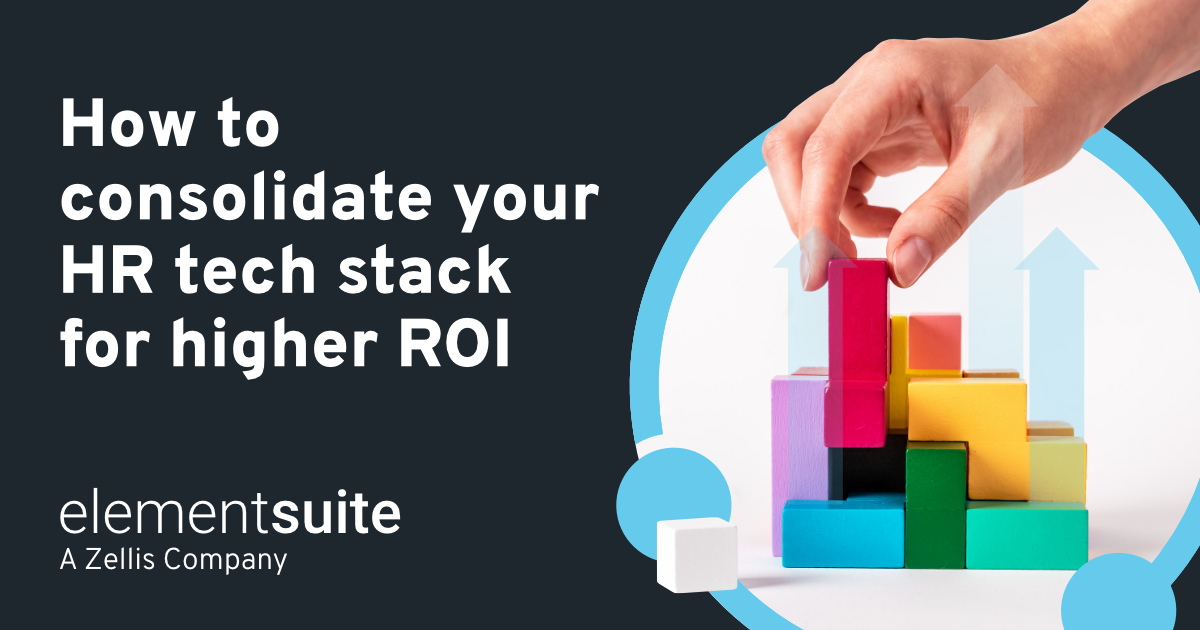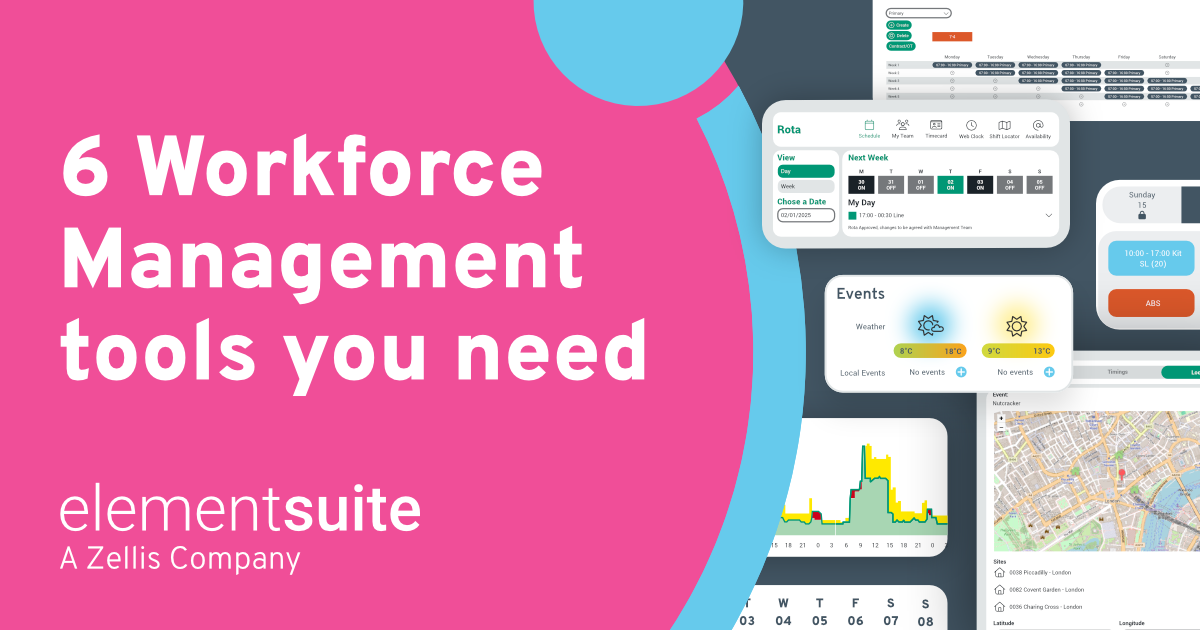Let’s talk about HR tech. By that, we mean the abundance of them.
Over the years, best-of-breed systems have been stacking up in HR like an overflowing inbox. Payroll? Over there. Recruitment? Somewhere else. Employee engagement? Who even knows anymore? And in between all that, you’ve got duplicate data entry, endless manual processes, and integration nightmares.
You originally invested in these systems for efficiency and expert solutions. But now? You’ve gone from drowning in spreadsheets to drowning in systems.
But what if you could toss all that chaos out the window and simplify your HR operations with HR tech stack consolidation? Fewer systems, improved efficiency, and a bigger return on investment (ROI).
Challenges of disconnected HR systems
This one might hit home for a few, but isn’t it tiring having to update an employee’s information into different systems, re-enter the data, and pray nothing goes wrong?
Don’t worry, you’re not alone. The reality is that many organisations still rely on separate HR systems that simply do not talk to each other. It’s a bit like a bad marriage –draining. However, the issue with integration challenges is that not only is it a headache switching from one system to another, it leads to a host of problems, including:
- System fragmentation: It has been found that because of system fragmentation, 82% of HR teams are experiencing adoption challenges.
- Data silos: To state the obvious, data stored in separate systems makes it difficult to gain a comprehensive view of your workforce, leading to inconsistencies and a lack of actionable insights.
- Manual processes & duplicate data entry: Did you know that knowledge workers can spend up to 12 hours a week chasing after data across disparate systems? That’s a lot of time wasted.
- Delayed decision-making: All this, of course, will eventually trickle down into delayed decision-making, which, in this current climate, is non-negotiable.
What is HR tech stack consolidation
So, what exactly is HR tech stack consolidation? In simple terms, it means taking all your standalone HR systems and merging them into one integrated platform.
Remember back in the 90s when we would have a separate device for phone calls, a separate device for texts, a separate device for taking pictures, a separate device for video, and a separate device for listening to music?
Now, we have them all on one device (aka the standard smartphone). That is basically HR tech stack consolidation – everything on one platform.
It’s all about system unification and platform integration; a journey of tech modernisation and digital transformation that leads to a streamlined technology setup that makes life easier for everyone-especially in the age of AI.
Key components of an HR tech stack
Let’s break it down: what does a modern HR tech stack look like when it’s not a tangled mess?
- Core HR System (the foundation): Think of this as the backbone of your HR operations. This is where employee data is stored, payroll is processed, and absences and employee benefits are managed. If this part isn’t solid, the whole thing falls apart.
- Integrated modules (the essential components): These are the must-have extras like recruitment, onboarding, performance management, learning and development, and employee engagement. When these elements work together smoothly, your HR tech stack delivers a rich and satisfying experience for employees and HR teams alike.
- Analytics & reporting tools (the data engine): This is where the magic happens. With the right analytics tools, your HR team can track key performance indicators, measure workforce trends, and make informed, data-driven decisions that help the company grow.
- Automation & AI capabilities (the intelligence layer): AI is the intelligence engine that fuels the entire HR tech stack. With automation and AI capabilities such as ELLA, you can not only streamline repetitive HR tasks like screening candidates and scheduling interviews but your team and workforce have their very own 24/7 AI HR assistant to answer and support their whole employee lifecycle.
- API integrations (the connector): Even the best HR tech stack won’t work efficiently if there is no communication. That’s where API integrations come in, ensuring that different systems communicate effortlessly, eliminating the need for manual processes and reducing errors. This is what transforms a messy stack of tools into one unified, efficient HR solution.
The main point here is API integrations. Each of your best-of-breed system architectures would have been designed with different codes and algorithms. So, even if they were merged together with a system that took them under one roof, inefficiencies could still occur.
For instance, just because you have a French and English person under the same roof, doesn’t mean they will understand each other—not fully, anyway. But say it was a house full of French people (aka systems made from the same codebase), there wouldn’t be any miscommunications—everyone speaks the same language.
That is what the essential functionality of elementsuite has set out to do – one tool, one language, one single source of truth.
Benefits of consolidated HR software
So why consolidate? Aside from tidying up your tech clutter, consolidating your HR systems delivers a host of operational efficiency – both immediate and long-term.
Cost savings
If you’re managing multiple HR systems, you’re also dealing with multiple licensing fees, maintenance costs, and upgrade expenses. And let’s not forget the hours your team spends manually transferring data between systems – hours that could be spent on something far more valuable.
With an all-in-one HR platform, you cut out all that extra spending. Plus, when you consolidate all your HR systems, you can combine all your data to create more efficient and cost-effective work schedules, driving reductions in working hours and labour costs.
Enhanced productivity
Now, we already know disparate and fragmented systems can help with saving up to 12 hours of administrative time. Imagine what you and your team can do with that.
Layer that with ELLA, your 24/7 AI HR assistant, and you can put even more time into your team’s pockets. Whether it’s creating interview questions, drafting up policies, providing feedback, or simply understanding your HR data, ELLA ensures responses align with your organisation’s specific HR policies and business requirements. It acts as an always-available assistant, offering instant answers to employees and HR teams alike. Less busy work, more impact.
Improved employee experiences
But HR tech stack consolidation isn’t just for your HR team. Your workforce will thank you, too. No longer will they have to log into different systems to access their training modules or book annual leave. With elementsuite, everything can be found in one unified system (and is even available via mobile phone). Because, at the end of the day, tech adoption is all about the user experience.
On top of that, with all your data speaking the same language and insights displayed on one dashboard and reporting tool, you can gain deeper insights and improved data accuracy like never before, so you can create more effective employee experience strategies that deliver real business results.
No longer will you have gaps in your data or insights that you cannot see.

Evaluating HR systems for consolidation
But now, the question is, what systems should you be consolidating? What are the evaluation criteria? Where do I start with my consolidation planning efforts?
Here, there is no one-size-fits-all answer, as each organisation and HR team will have its own business requirements and processes.
However, to help you along in this system assessment process, we have created a FREE HR tech heatmap to help you pinpoint where bottlenecks and gaps exist across your HR systems, and where to prioritise system consolidation efforts.
Download the HR tech heatmap for free by visiting our HR toolkit.
Understanding the ROI of consolidating HR software
But first, disclaimer: We won’t sugarcoat it – consolidating your HR systems requires an upfront investment. But long-term? The ROI is huge. Here’s how to measure it:
Quantitative ROI factors
- Cost savings: Calculate the reduction in software licensing fees, IT support costs, and administrative expenses.
- Time savings: Estimate the time saved by HR teams through the elimination of manual data entry and the automation of routine tasks.
- Efficiency metrics: Track key performance metrics such as recruitment cycle time, onboarding duration, and error reduction rates.
Qualitative ROI factors
- Improved decision-making: With a unified data set, take note of the more informed decisions you make based on accurate, real-time data.
- Enhanced employee experience: Track employee engagement and retention rates pre and post-consolidation.
- Strategic focus: Take note of the number of strategic initiatives that drive long-term business success that have been created as a result of enhanced data insights.
This might seem like a lot, but fear not. We have another gift for you: a FREE ROI calculator.
Yes, because we know how important it is to understand the success indicators and performance metrics in measuring the return on investments of your HR systems and consolidating your HR tech stack, we have created a FREE ROI calculator for you to start using now.
To get started, head over to our HR toolkit
Best practices to maximise ROI from HR system consolidation
Ready to jump on the consolidation bandwagon? Here are some actionable tips to ensure your transition is as smooth (and less stressful) as possible:
- Conduct a thorough system assessment: Start by evaluating your existing HR systems with a clear set of evaluation criteria (the heatmap will be your best friend, here).
- Involve stakeholders early: Bring in your HR teams, IT experts, and even a few enthusiastic end-users from the start. Their insights will help shape a system that meets real-world needs and ensures a smooth transition. The more voices you have on board, the better the final product will be.
- Prioritise integration and automation: Choose a solution that boasts robust API integrations and AI-driven automation. This ensures data flows seamlessly between systems, reducing the risk of manual errors and boosting overall process efficiency.
- Align with business goals: Your HR system should not only be a tech upgrade but also a strategic asset that aligns with your broader business objectives. Set key performance indicators (KPIs) that match your organisational goals – whether that’s faster hiring times, higher employee satisfaction, or more efficient data management.
- Plan for continuous evaluation and improvement: Remember, technology (and your business) keeps evolving. Regularly assess your system’s performance using metrics like data accuracy, user satisfaction, and process efficiency.
Achieve system unification with elementsuite
Consolidating your HR tech stack is a strategic initiative that can supercharge your HR operations, enhance employee engagement, and deliver impressive ROI. And by eliminating system fragmentation, breaking down data silos, and automating manual processes, you can create a unified, streamlined HR environment that works like a well-oiled machine.
With elementsuite’s all-in-one HR software, you get a solution that covers every essential aspect of your HR tech stack. From core HR systems to AI-driven workflow optimisation, elementsuite ensures that all your HR functions work in harmony, driving better outcomes across the board.
So, whether you’re looking to cut costs, boost productivity, or simply bring some order to the chaos of multiple systems, an all-in-one HR software such as elementsuite is the way to go.
Ready to get augmenting? Book a demo with elementsuite today and see how you can take the next step toward HR tech consolidation.




